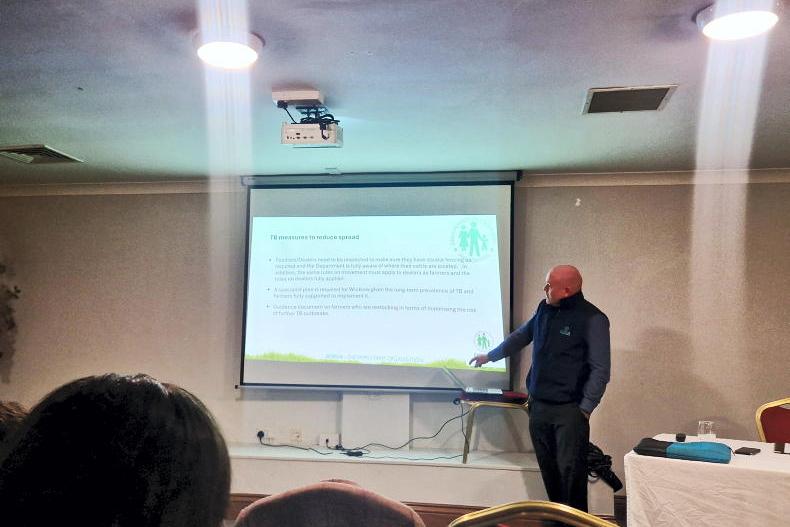The Department of Agriculture proposals to control TB made for sober reading for the farmers in the room at an ICMSA meeting in Gorey last week.
While wildlife control featured, the majority of proposals focused on extra restrictions for herds with significant or repeated breakdowns.
Among them were mandatory blood testing of the exposed cohort in herds where 5% of the infected cohort is positive or there are 10 reactors. ICMSA’s Paul Smyth outlined that such breakdowns would also require two clear tests at least six months apart, doubling the minimum restricted period from four to eight months.
A mandatory risk mitigation plan, including a purchasing in policy, would also be put in place.
High-risk cohort animals would be identified to the herdowner for early culling.
If cohorts of previous reactor animals present at a previous breakdown are in the herd when a relapse breakdown occurs, testing at six monthly intervals for a period of five years would be required.
The sale of high-risk cows from high-risk herds would be prohibited for three years after de-restriction.
There would be mandatory disclosure of TB herd risk category at point of sale for all sales.
Herd owners would be encouraged to purchase cattle of an equivalent or superior TB herd categorisation status to that of their herds.
No compensation would be paid for the retention or purchase of high risk animals in relapse herds.
They would also be prohibited from selling breeding stock on the open market until all the infected cohorts are culled.









SHARING OPTIONS